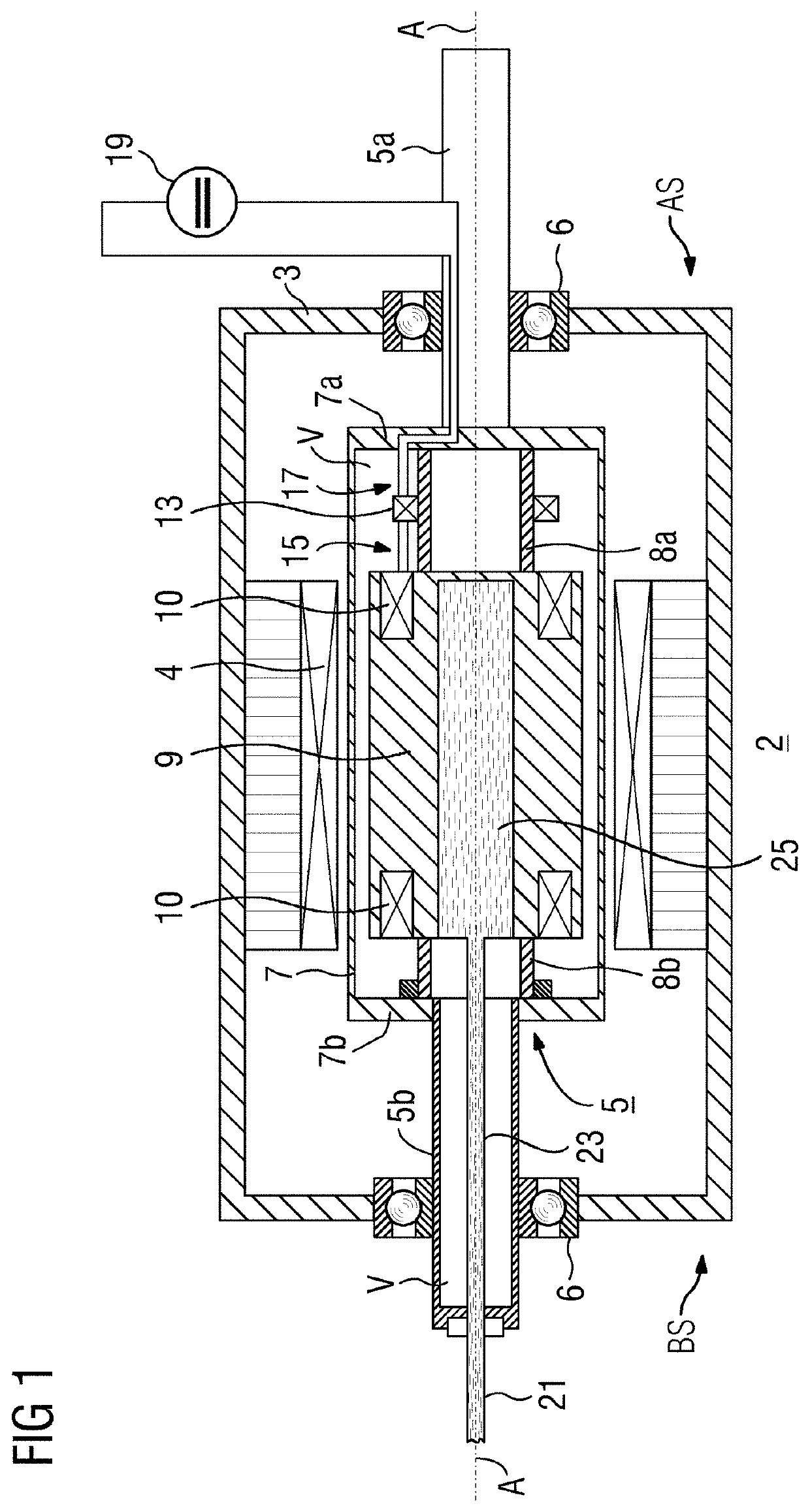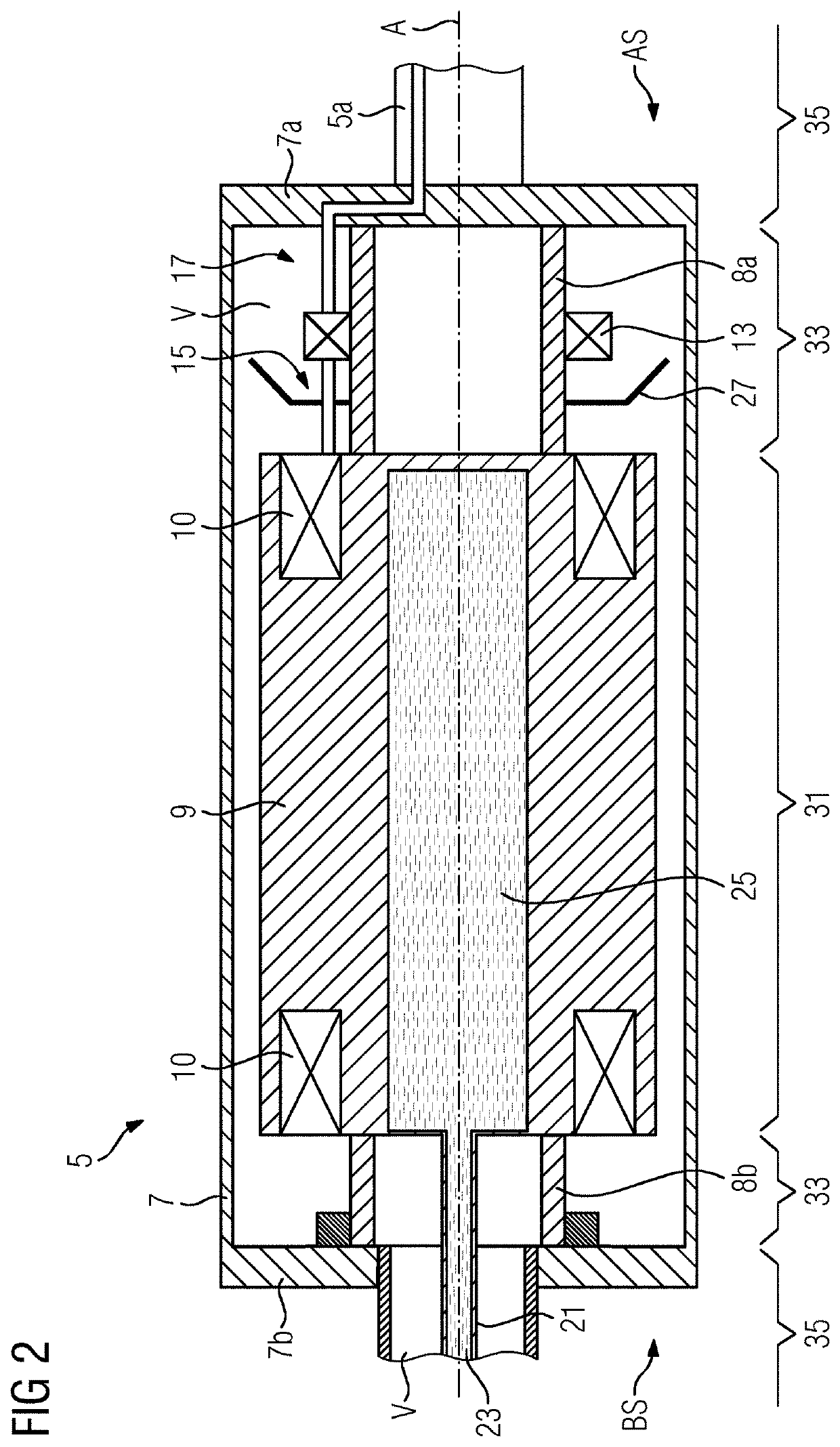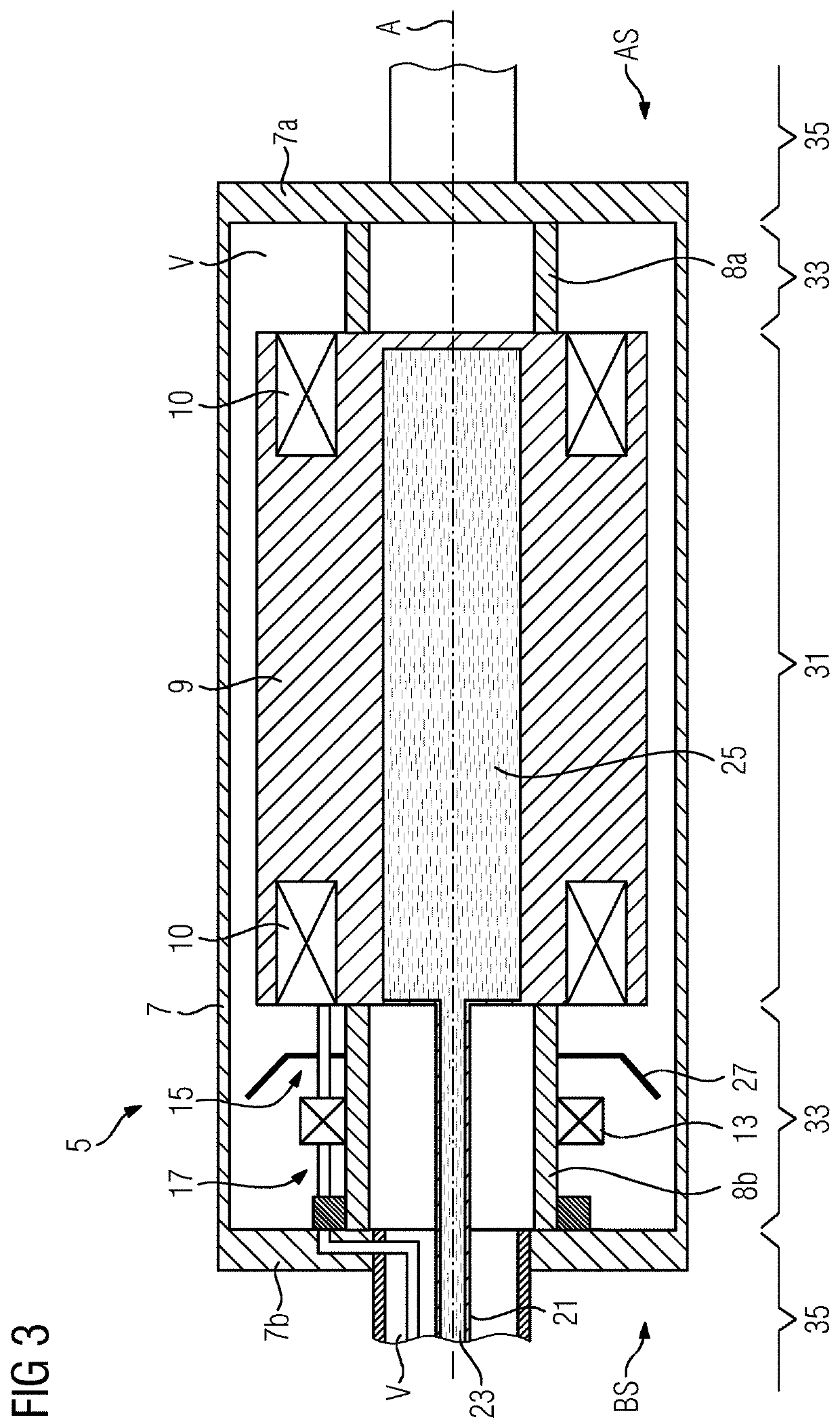Rotor with superconducting winding for continuous current mode operation
- Summary
- Abstract
- Description
- Claims
- Application Information
AI Technical Summary
Benefits of technology
Problems solved by technology
Method used
Image
Examples
Embodiment Construction
[0066]FIG. 1 depicts an electrical machine 2 according to a first exemplary embodiment in a schematic longitudinal section, e.g., along the central machine axis A. The machine 2 includes a stationary machine outer housing 3, which is at room temperature and has a stator winding 4 therein. Within this (for example, evacuable) outer housing and surrounded by the stator winding 4, a rotor 5 is mounted in bearings 6 such that it is rotatable about an axis of rotation A, which rotor includes, on its drive side AS, a solid axial rotor shaft part 5a mounted in the corresponding bearing. The rotor has a rotor outer housing 7 which is configured as a vacuum vessel and in which a winding carrier 9 with a superconducting rotor winding 10 is mounted. Serving this purpose, on the drive side AS, there is a (first) rigid, tubular connecting element 8a between the winding carrier 9 and a disk-shaped side part 7a, fixedly connected to the rotor shaft part 5a, of the rotor outer housing 7. The substa...
PUM
 Login to View More
Login to View More Abstract
Description
Claims
Application Information
 Login to View More
Login to View More - R&D
- Intellectual Property
- Life Sciences
- Materials
- Tech Scout
- Unparalleled Data Quality
- Higher Quality Content
- 60% Fewer Hallucinations
Browse by: Latest US Patents, China's latest patents, Technical Efficacy Thesaurus, Application Domain, Technology Topic, Popular Technical Reports.
© 2025 PatSnap. All rights reserved.Legal|Privacy policy|Modern Slavery Act Transparency Statement|Sitemap|About US| Contact US: help@patsnap.com



